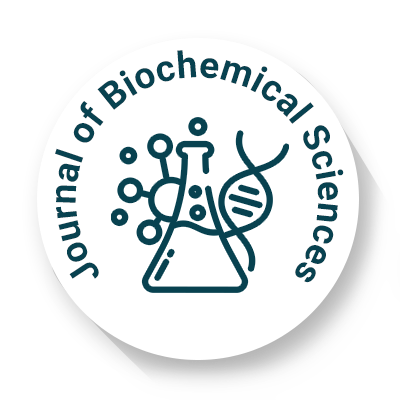
Journal of Biochemical and Sciences
OPEN ACCESS

OPEN ACCESS

Department of Dynamics of Chemical and Biological Processes, N.N. Semenov Federal Research Center for Chemical Physics, Moscow, Russia
Many studies have explored the application of CRISPR in synthetic biology. These studies have not only focused on addressing biomedical issues but have also examined the use of CRISPR in modifying plants and microorganisms or bacteria [1,2]. These simpler organisms have been particularly useful for testing genome editing tools and technologies in fundamental research on this subject. The taxonomic diversity of these organisms and their placement on the molecular phylogenetic tree, as determined by fossil records and geological history, indicate the feasibility of performing evolutionary analyses or reconstructions. This can be achieved in both forward and reverse directions using CRISPR/Cas technologies, along with the relevant tools of bioinformatics and systems biology.
Undoubtedly, it is possible to reconstruct only certain phenotypic or biochemical aspects, probably limited by synteny (sensu lato). Critical for the “bottom-up†analysis from a phylembyrogenetic perspective is the ability to investigate potential forms through the principles of evolutionary developmental biology using CRISPR/Cas experiments. In the context of a “top-down†analysis, the fundamental challenge lies in the potential for reconstructing the earliest forms and molecular biological mechanisms through experimental “recapitulation†using CRISPR/Cas experiments. Regarding the latter issue, the ultimate experimental objective is to construct protocell models containing CRISPR and their assemblies, spanning from colonial structures to proto-tissues.
These models should rely on transcriptional signaling to simulate cellular-level communication in synthetic morphogenesis. These efforts have already commenced as of 2022. For instance, in a study by Yang et al., synthetic transcription systems are employed to generate diffusive RNA signaling [3]. This signaling regulates the processing and localization of DNA using CRISPR/Cas within a binary community of synthetic protocells. The authors have developed a synthetic extracellular transcription scheme based on CRISPR/Cas inside semi-permeable protein-polymer microcompartments (protocells), which are activated by DNA sequences and produce functional RNA aptamers with specified properties. Next, the transcription module is “turned on†to generate RNA strands that function as diffuse signals which can be received by the neighboring protocells, activating the internalized DNA probes or the localized Cas nucleases.
Starting with the assertion of the necessity for synthetic biology mechanisms to fabricate artificial protocells endowed with intricate dynamic behaviors, information processing capabilities, and communication within their communities, Yang et al. conclude by emphasizing the resemblance of these artificial structures [3]. They suggest that these structures present a promising avenue for simulating cellular attributes and constructing molecular information platforms.†CRISPR/Cas technology is facilitating the convergence of “bottom-up†and “top-down†approaches within the domains of synthetic biology, and to some extent, chemical biomimetics and genetic bionics. This convergence has given rise to investigations in the field of “CRISPR-protobiology†or “CRISPR-protophysiology.†Furthermore, it opens up the potential to replicate genetic signaling based on this technology in models that explore the development of tissues and the shaping of multicellular structures, thereby offering applications in the realm of evolutionary developmental biology. On one hand, within the “bottom-up†perspective, systems protobiology progresses through the stages of chemical evolution, starting from basic (bio-)catalytic networks within lipid microcompartments [4]. It then advances towards contemporary genetically mediated modes of interaction. This progression involves the transmission and appropriate expression of genetic material in “pseudo-Turing†protocellular models. These models incorporate synthetic activators and inhibitors based on CRISPR/Cas technology. On the other hand, when considering the modeling of complex early evolutionary processes that are physically unattainable in modern cells, a reductionist approach becomes feasible. This reductionism stems from analog protocellular emulation of biochemical compartmentalization and signaling. It allows us to deconstruct the molecular evolutionary framework down to its physical and genetic foundations using a “top-down†approach involving CRISPR/Cas technology.
In the CRISPR-2023 congress report, we implemented a complete bibliographic analysis of the above trends (with more than one and a half thousand citation units) using automated analysis and heuristic graphical representations, including an ERD-like mind map format and cluster visualization based on the analyzed metadata [5].
Received 12 September 2023; Revised 29 September 2023; Accepted 3 October 2023
Department of Dynamics of Chemical and Biological Processes, N.N. Semenov Federal Research Center for Chemical Physics, Moscow, Russia